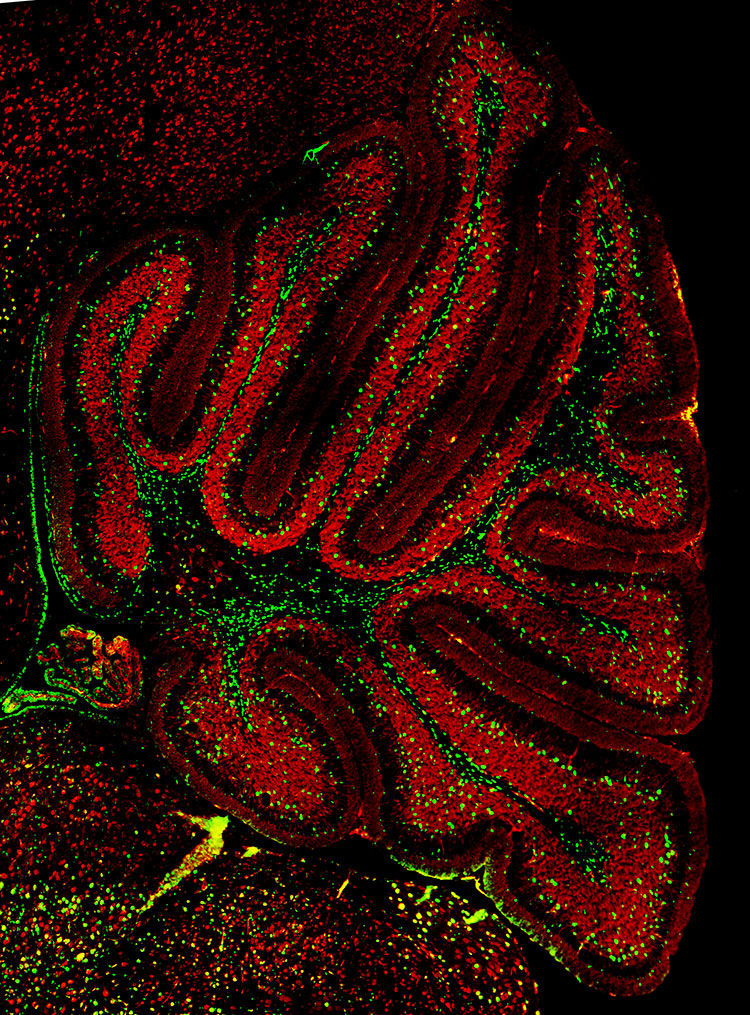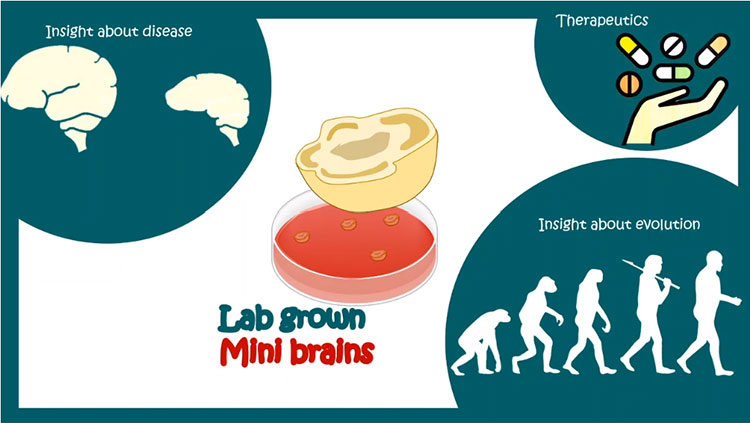The Developing Cells to Help Better Fine-Tune Movements
- Published15 Nov 2023
- Author Tristan Rivera
- Source BrainFacts/SfN

When you first learned to cut out shapes, you may have found yourself cutting outside of the lines. But with time and experience, you start to fine-tune your ability for a more precise cut. The ability to fine-tune motor skills originates in neural cells that grow early in our development.
This section of a mouse’s developing cerebellum, pictured above, is one of numerous brain areas helping to control this type of coordination and movement. The green and red stains mark the presence of two types of developing neurons: non-fully developed inhibitory interneurons (green) and excitatory granule cells (red) — the most abundant cells in the cerebellum.
The red-stained granule cells turn on the function of Purkinje cells: neurons in the cerebellum that help inhibit movements. The green-stained inhibitory interneurons cells will eventually develop into cells important for blocking Purkinje cell function, effectively allowing movements to take place.
This intricate network of developing neural switches grows to help you learn how to guide smooth movements, allowing you to get closer to the perfect cut next time you’re cutting out shapes.
CONTENT PROVIDED BY
BrainFacts/SfN
References
Also In Brain Development
Trending
Popular articles on BrainFacts.org


















